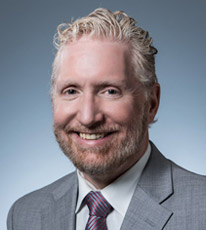 Energy drinks are everywhere today.
Energy drinks are everywhere today.
Sean Nordt, professor of pharmacy at Chapman University, looks into the effect these drinks have on the teens who consume them regularly.
Sean Patrick Nordt, M.D., Pharm.D. is the Associate Dean of Academic Affairs, Chief Medical Officer and the Gavin Herbert Endowed Professor of Pharmacy at the Chapman University School of Pharmacy.
Prior to joining the School of Pharmacy’s Administrative team, he was an Assistant Dean of Pre-Health Education at the University of Southern California, Keck School of Medicine. He was also the Director of the Minor in Health Care Studies and Associate Professor of Emergency Medicine. While at the University of Southern California, he held various positions including: Director of the Section of Toxicology, Chair of Medication Safety, member of the Admissions, Curriculum, Student Affairs, Educational Affairs, Accreditation, and Pharmacy and Therapeutic Committees. In addition, he served on multiple Department of Emergency Medicine committees.
He is board certified emergency physician and dual-board certified toxicologist. Dr. Nordt is also a Fellow of American Academy of Clinical Toxicology, Fellow of the American Academy of Emergency Medicine, Fellow of the American College of Medical Toxicology. He is a former trustee of the American Academy of Clinical Toxicology and former Chairman of their membership committee. Dr. Nordt has also served on a number of American Board of Applied Toxicology committees including credentialing and screening. He has received several teaching awards.
Teen Energy Drink Use
Energy drinks can prove harmful for teens who consume them…
Results of a recent study show that 40 percent of teens aged 13 to 19 have reported at least one negative effect after drinking these caffeine-infused brands.
Although several of these effects often go away on their own, the most common include insomnia, feeling jittery, heart palpitations, abdominal pain, nausea and vomiting, headache, chest pain, labored breathing and most seriously…. seizures.
Fifteen-percent of teens surveyed admitted mixing alcohol in their energy drinks, while another nine percent mixed illegal drugs like marijuana, cocaine and meth.
Interestingly, these drinks are perceived as “healthy” and are being used for weight loss by some.
Teens list multiple reasons for drinking these beverages…including (in order) to gain energy, as a study aid, to improve sports performance, their friends drink them, it “feels cool,” to lose weight, they taste good, and to drink while driving.
Eighty-one percent of teens reported drinking these beverages once a week. Nearly 30 percent reported that they tried energy drinks for the first time by age 12 or even younger.
There are currently no age limitations set in place to purchase energy drinks… although several countries and U.S. cities have considered restricting sales to minors under the age of 18. These drinks contain varying amounts of caffeine, with doses ranging from 70 to 300 milligrams, but they can be as high as 500 milligrams per can.
How do teens choose which brands to purchase? Both brand name and packaging… as well as their friends’ influence played a role in their choice.
There are approximately 500 brands of these beverages being sold. Last year, the global energy drinks market topped 55 billion dollars.
With so many options now on the market, their choices were influenced by flavor, brand name, ease of access, it’s the brand their friends drink and the amount of caffeine in the can. Surprisingly, cost proved to be the least important factor.

Comments
One response to “Sean Nordt, Chapman University – Teen Energy Drink Use”